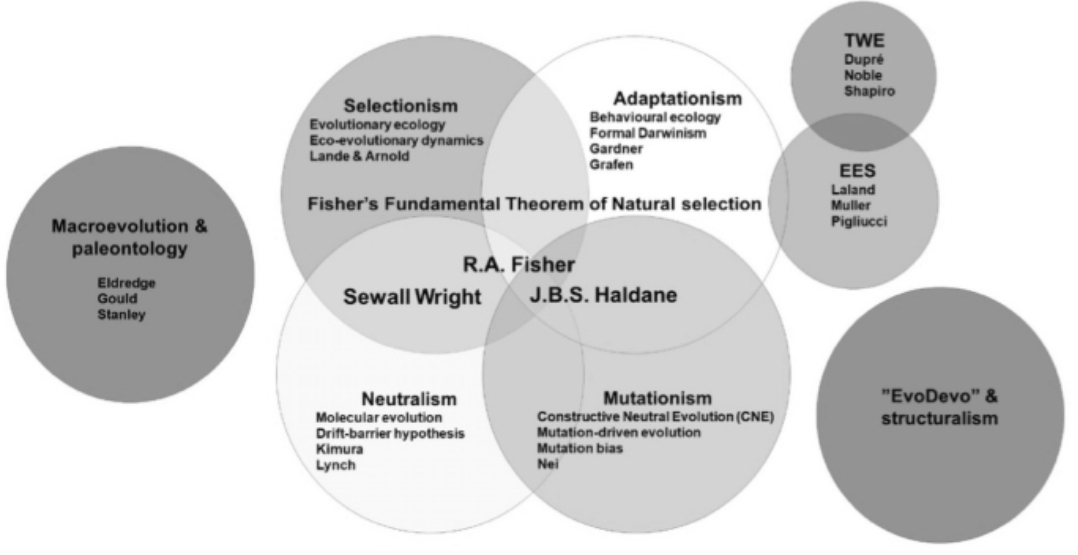Unmodern Synthesis: Developmental Hierarchies and the Origin of Phenotypes
The paper "Unmodern Synthesis: Developmental Hierarchies and the Origin of Phenotypes" by Richard Gawne, Kenneth Z. McKenna, and H. Frederik Nijhout, published in BioEssays in 2018, presents a critical perspective on the Modern Evolutionary Synthesis (MES) and argues for a more integrated understanding of how phenotypes originate. The authors contend that while the MES has been successful in explaining the mechanisms of evolutionary change at the population genetic level, it falls short in providing a comprehensive account of the developmental processes that generate phenotypic variation, the raw material upon which natural selection acts.
Gawne, McKenna, and Nijhout propose a hypothetical "Unmodern Synthesis" (UMS) as a contrasting framework. This UMS emphasizes the hierarchical nature of biological organization and the active role of developmental processes at all levels in shaping phenotypes. Unlike the gene-centric view often associated with the MES, the UMS posits that phenotypes emerge from complex interactions across multiple levels, from genes and cells to tissues, organs, and the environment.
The authors begin by acknowledging the contributions of the MES in establishing genetics as the foundation of evolutionary theory. They recognize its success in explaining microevolutionary processes like adaptation through natural selection acting on heritable genetic variation. However, they argue that the MES has inadvertently led to an overemphasis on genes as the primary determinants of phenotypes, often neglecting the crucial role of development.
The paper highlights several limitations of the MES in explaining the origin of phenotypes. Firstly, it argues that the mapping between genotype and phenotype is far more complex than a simple one-to-one relationship. Developmental processes, including gene regulation, epigenetic modifications, cell-cell interactions, and environmental influences, significantly mediate how genetic information is translated into observable traits. The same genotype can give rise to different phenotypes depending on the developmental context, a phenomenon known as phenotypic plasticity.
Secondly, the authors point out that the MES often treats phenotypic variation as random with respect to adaptation. However, developmental processes can introduce biases in the types of variation that arise, potentially channeling the direction of evolution. Certain developmental pathways might be more prone to producing specific kinds of morphological changes, influencing the evolutionary trajectories of lineages. This concept of "developmental bias" is a key aspect often downplayed within the traditional MES framework.
Thirdly, Gawne et al. argue that the MES tends to focus on the inheritance of genes, neglecting other forms of inheritance that can influence phenotypic evolution. Epigenetic inheritance, where modifications to DNA that don't involve changes in the nucleotide sequence are passed down across generations, and ecological inheritance, where organisms modify their environment in ways that affect the selective pressures on subsequent generations, are examples of non-genetic inheritance that can play a significant role in evolution.
In contrast to the MES, the proposed UMS emphasizes a more holistic view of the organism. It posits that phenotypes are not simply readouts of the genome but rather emergent properties arising from dynamic interactions within a hierarchical system. Genes provide the initial components, but their expression and ultimate contribution to the phenotype are contingent on their interactions within cellular networks, tissue architectures, and the organism's environment.
The UMS underscores the importance of understanding developmental biology to fully grasp the origins of phenotypic diversity. It suggests that evolutionary change cannot be adequately explained solely by focusing on changes in gene frequencies within populations. Instead, it requires an understanding of how developmental systems evolve and how these changes lead to novel phenotypes that can then be acted upon by natural selection.
The authors use the analogy of the "duck-rabbit illusion" to illustrate the difference between the MES and the perspective they advocate. They suggest that both sides of the debate might be looking at the same phenomenon – the evolution of organisms – but from fundamentally different perspectives. The MES primarily focuses on the genetic changes, while the UMS emphasizes the developmental processes that mediate the expression of these changes into phenotypes.
While the paper does not present a fully fleshed-out and testable theory of the UMS, it serves as a powerful critique of the limitations of a purely gene-centric view of evolution and a call for a more integrated approach. It argues that future progress in evolutionary biology requires a deeper understanding of the intricate interplay between genes, development, and the environment in shaping the diversity of life. By highlighting the importance of developmental hierarchies and the active role of developmental processes, the "Unmodern Synthesis" paper encourages a shift in perspective towards a more comprehensive and nuanced understanding of the origin of phenotypes and the mechanisms of evolution. It suggests that integrating insights from developmental biology into the evolutionary framework is not just an extension but a fundamental necessity for a more complete picture of life's evolutionary history.




Comments
Post a Comment